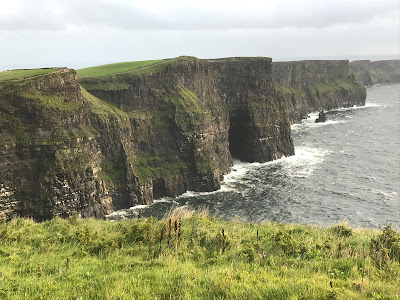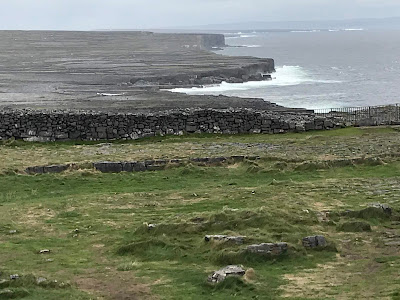Ends of the Earth
Could this be what people have in mind when they say “the ends of the earth”? For two days in a row now I’ve stood on clifftops and washed the sea churn and crash below. Next stop, North America.
Yesterday it was the Cliffs of Moher in County Clare, home to my Long relatives. (I saw the old road to the house of the bachelor uncles Mom and I met so long ago.) The Cliffs of Moher were being buffeted by what felt like 50-mile-an-hour winds when we arrived. I was afraid they’d blow my phone out of my hands or me into the drink.
Today it was Dun Aengus on the Aran Island of Inishmore, a fort that’s perched atop 200-foot cliffs and loses a bit of its real estate to the sea every year. This place was inhabited in 800 B.C., and has been a fort for at least 2,000 years. That’s two thousand.
Everywhere you look here the earth looks both new and old at the same time: rock walls, lambent air, sky a mottled combination of clouds and sun.
Cattle munch grass between the stones. Cyclists (including us) zoom from town to the far reaches of the island, searching for ruined churches and other ancient sites.
It’s a companionable mix, and a magical place. And it feels like the ends of the earth.


